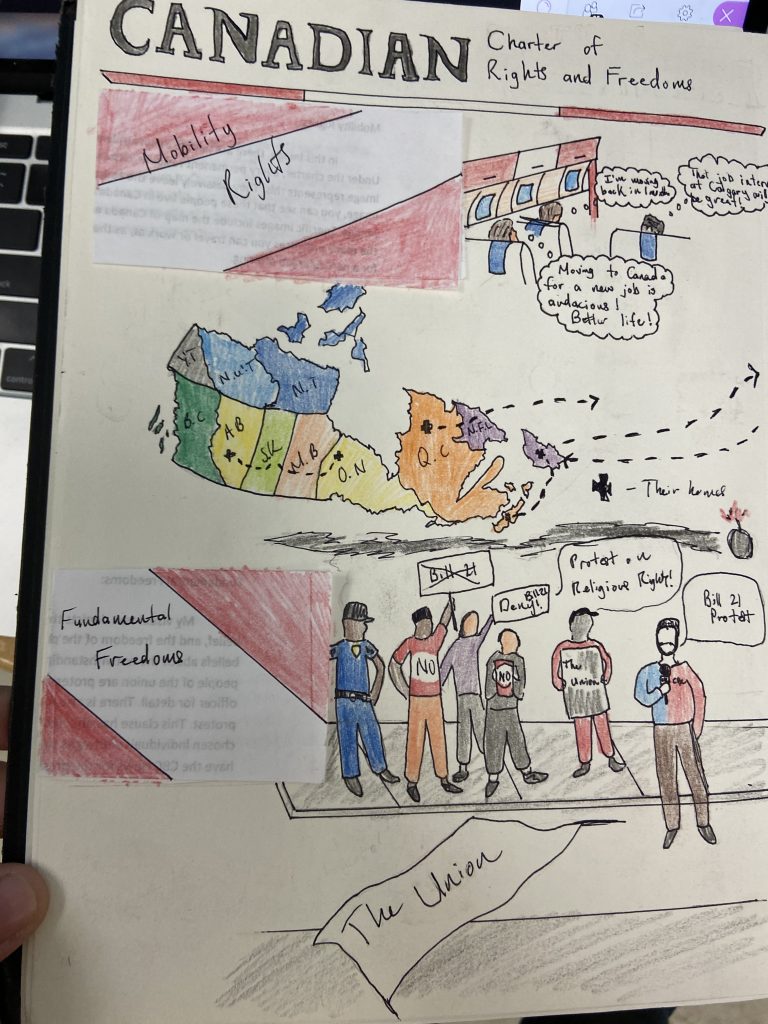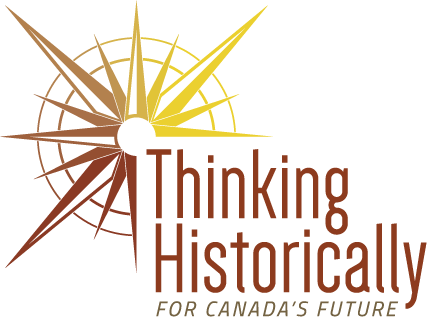Brandon Hamilton,
French Immersion Teacher
When he shared his experiences with us, Brandon Hamilton was teaching Grade 7 and 8 late French Immersion classes in Dartmouth, Nova Scotia. The student population of the school where Brandon worked reflected a mix of socio-economic backgrounds in the community, including both low and high-income families. Brandon explained that the diverse school context not only enhanced discussions but also brought multiple perspectives and allowed students to explore various cultural celebrations and understand how government policies impact their community. Brandon’s classroom was also home to many newcomers to Canada, particularly students from Nigeria. He included discussions that allowed these students to share their experiences while also encouraging their peers to engage with contemporary issues about immigration and identity. By creating an inclusive environment, Brandon ensured that every student felt valued and heard. Through discussions about cultural holidays like Diwali and Ramadan, Brandon aimed to cultivate a sense of belonging among his students, helping them appreciate the diverse histories that shape their shared Canadian identity.

Caledonia Junior High School
Dartmouth, Nova Scotia

Indigenous Knowledges
Brandon has found that teaching Indigenous histories and perspectives is significantly shaped by the local context, particularly the presence of the Mi’kmaq community. “There’s a lot of current events connected to Indigenous relationships and treaties in this area,” he explained. Over his six years of teaching, he has also observed a shift in his students who arrived in junior high with an impressive foundational knowledge of Indigenous issues. This development is attributed to renewed curricular efforts that incorporate Indigenous voices and perspectives, making the subject matter more relevant and accessible to students.
Brandon has used current events to engage learners in discussions about Indigenous relationships, treaties, and rights. For instance, he has emphasized local issues such as the recent shift of Clearwater Seafood ownership to Indigenous communities. The combination of contemporary examples and primary sources, including transcripts from oral conversations with Mi’kmaq elders and historical documents, allows students to explore Indigenous histories in a tangible way.
Brandon’s approach is also supported by collaboration with a French coach who has been instrumental in connecting him with local Indigenous elders for classroom presentations. This partnership has enhanced Brandon’s ability to convey concepts of equity, equality, and social justice within the framework of a French immersion program.
He also emphasized the importance of oral traditions and visual aids instead of relying solely on texts. As he explained, “Indigenous knowledge and Indigenous ways of teaching have proven to be incredibly effective – focusing on oral sharing of knowledge, relying less on texts, and use of visuals and imagery.”
“Circle-based discussion where everyone’s voice is heard and valued has also been instrumental for the collective exchange of knowledge and understanding,” he shared. Brandon acknowledged that while not part of the coach’s official responsibilities, her expertise has influenced Brandon’s teaching practice and enriched his students’ understanding of Indigenous histories and cultures in a meaningful way.

Civic Engagement
Brandon has embraced civic engagement in his classroom by combining historical inquiry with student agency using the power of storytelling. Through activities like Black History Month projects, he has encouraged students to explore prominent Black figures in Canada. “Their task was to look at a prominent Black figure in Canada, whether it be historic or current,” Brandon explained, adding that he was surprised by the range of individuals chosen. The students studied figures such as Viola Desmond, Wanda Robson, and even Drake by analyzing their challenges, opportunities, and resilience.
By framing discussions around themes like power and overcoming adversity, Brandon helps students connect abstract concepts to real-world narratives. He believes this approach “fosters civic engagement in different ways” beyond traditional activities like voting.
Brandon’s teaching has been complemented by community connections and connecting between history and the present. For instance, a student chose to study Calvin Woodrow Ruck, a local figure who brought attention to the Black Battalion, which led into class discussions about racial injustice in their own neighborhood. “Students were literally saying, ‘Oh, that’s so-and-so’s house… can you believe this?’”
By integrating current events, local histories, and discussions on social justice, Brandon has created opportunities for students to see themselves as part of an ongoing story of civic action and change. This approach, he noted, proves that “you can dig deep in an immersion context,” showing the value of engaging students in meaningful and transformative ways.
Co-created by Brandon Hamilton and Christine Cheng
